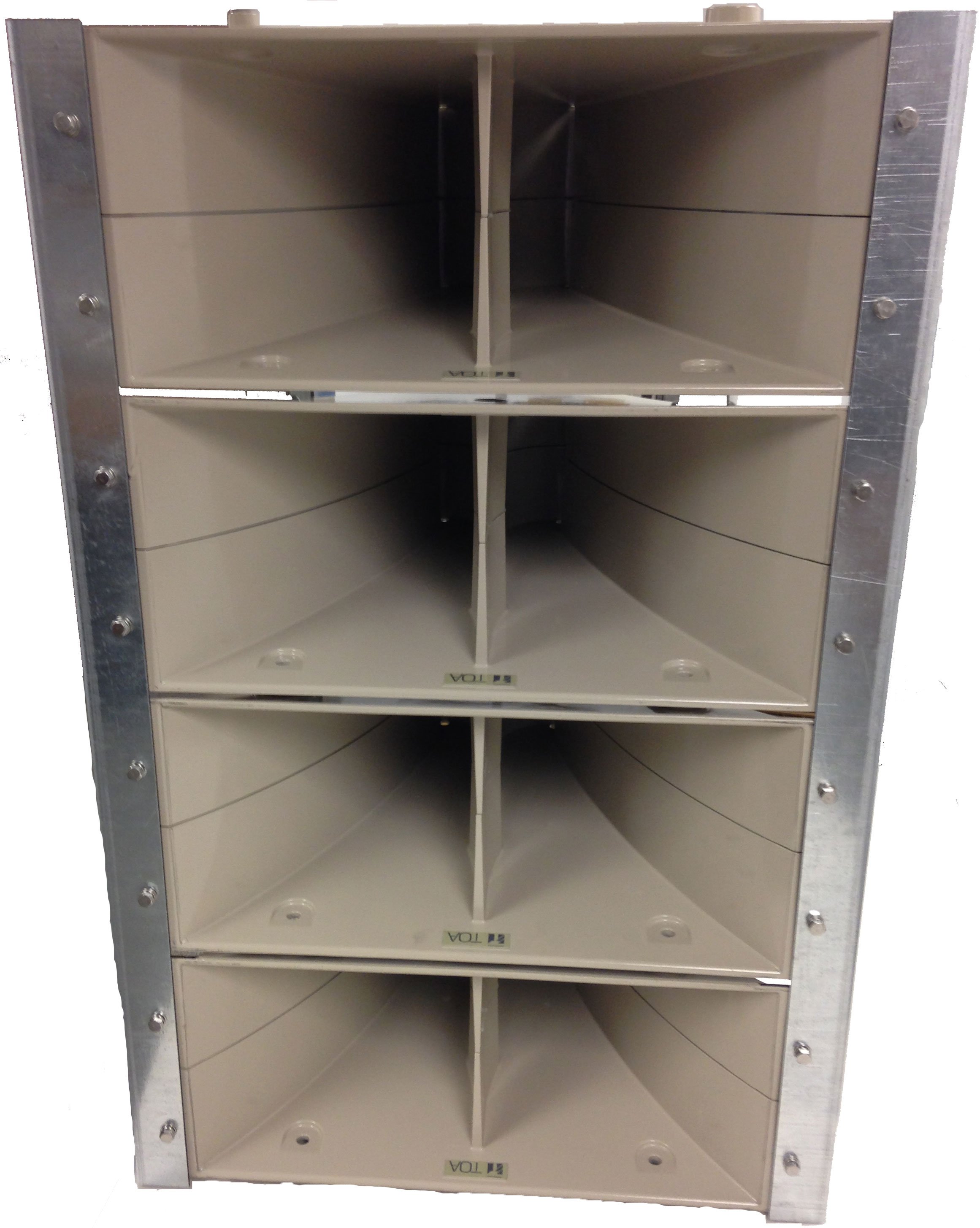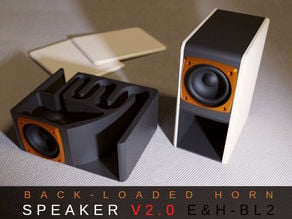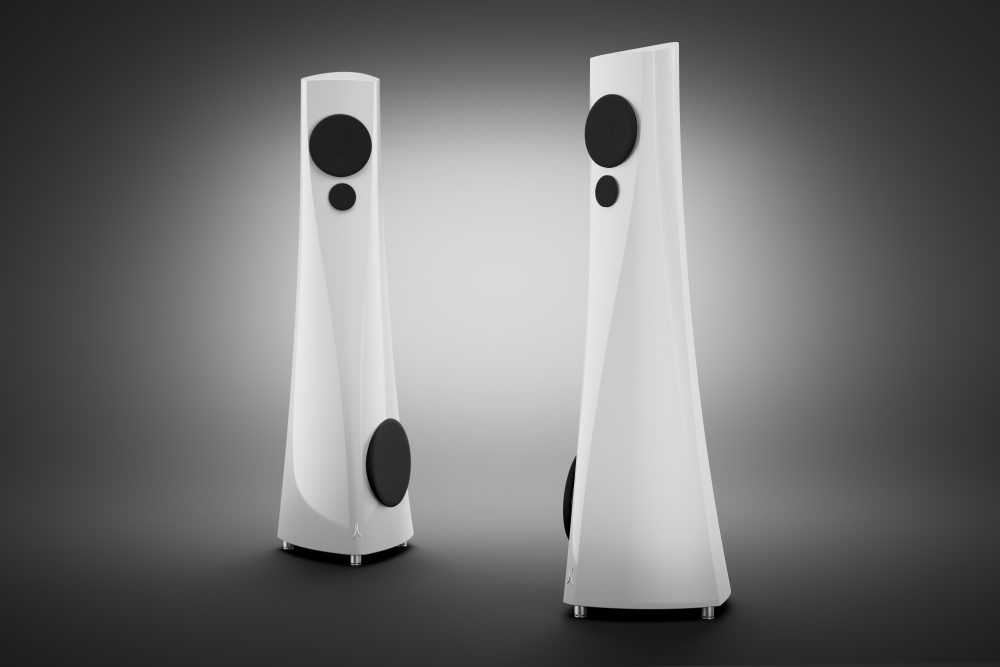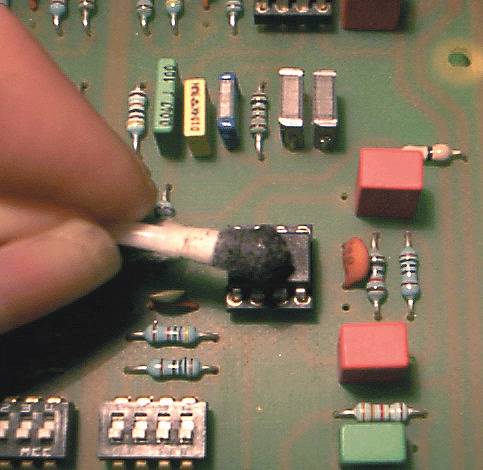this list of hacks isn't elitist, it can work with mp3 too.
1. use a computer, and it's not only because you can play dvd-a or dts-hd ma or good rips with foobar, which has very low distortion compared to an average 1.4Mbps flac, and also richer and detailed sound, mostly at higher volumes. With a pc and a decent soundblaster with low snr you can have good sound, NEVER use USB or external DAC since the levels of tweaking and preamplification inside the computer is lost when sending the sound data via USB to a dac, preamp or amp (see next).
2. (edited, I didn't explained well) Gain structure or stages of preamplification and volume levels between player, windows, preamp, amp. This is the most important step, keeping this setup: amplifier volume as maximum as possible (this is only the volume you have to tweak along with Foobar's volume)> preamplifier at max volume> windows at max volume > foobar at lowest as possible (with mp3 you can have good sound keeping at bare minimum, with 1.4Mbps Flac you can raise foobar volume and with dvd-audio you can raise even further foobar's volume without distortion). This is the only way to listen the best sound, with more richness and less distortion but you can easily destroy the speakers with a sudden sound in the computer. The tune is between the humming noise-audio richness of amplifier volume and distortion in Foobar volume , also with higher volume you don't notice humming noise so you can keep amplifier at maximum having richer sound, also dvd-a has richer sound when increasing foobar volume since at low foobar volume dvd-a has good undistorted sound but with little sound body. Also you can tweak windows master volume with equalizerAPO and Peace. Also 31 band parametric EQ with foobar is the best way to tune the sound.
3. removing crossovers, this removes energy consumption, increase spl and give you great levels of sound tweaking. With a 5.1 soundcard you can have well tweaked active stereo speakers (with 5 channel foobar EQ) and have 2 channels for mid-highs, 2 for bass-mids and .1 for subwoofer. Also you can use 2 channel EQ board (acts as a preamp and you have more sound tweak) and class d boards which are very energy efficient. With all the setup posted above, you can use a 50W board and deliver very loud homewrecking sound, and that's because the sound has been amplified to the max before arriving to the amplifier and are very efficient.
4. cutting AC. Most of the noise comes from AC, if you hook all the stuff to a battery with solar panels you wont have that humming noise that appears when you use the above settings.
5. no wires. a way to totally remove wire SNR is using sound via Bluetooth with arduinos and lossless Bluetooth boards, with each speaker with a class d board attached and Bluetooth board.
/cdn.vox-cdn.com/uploads/chorus_image/image/57197787/akrales_171011_2046_0152.0.jpg)
6. arrays or horns is the only way to have good sound, arrays reduce distortion and horns increase spl. making a diy array-horn speaker with Honresp will give you the best sound proven with facts, a horn can modify substantially any driver specifications. arrays inside horns can be made with high, mid and low frequencies, they propagate the sound in an uniform way and are very efficient.

7. Make your own speaker drivers. take magnets from junkyards or copper wire from broken motors, recoat them and make your own field coil speaker drivers, electromagnets can deliver better response than neodymium. To the top end if you make liquefied air or nitrogen, cryo speakers are the most energy efficient speakers to date with impressive speed response, it will remove coil impedance increasing conductivity and the electromagnet will have incredible strength. Also the most important part is light cones, you can make sandwich cones with carbon fiber and epoxy or epoxy-thermoplastic blend.
DIY Speaker Driver Tutorial (Aperiodic 3-way Loudspeaker from Scratch) - YouTube

8. 3d printing. with 3d printing you can make the best 3d curved shapes for horn or ported cabinets. you can 3d print a mold and fill it with Ultra-High Performance Concrete or epoxy granite. you wont find a better material for speakers.
Back Horn Speaker V2.0 BL2 - Bluetooth, Active, Passive by guppyk - Thingiverse

Estelon epoxy granite speakers

1. use a computer, and it's not only because you can play dvd-a or dts-hd ma or good rips with foobar, which has very low distortion compared to an average 1.4Mbps flac, and also richer and detailed sound, mostly at higher volumes. With a pc and a decent soundblaster with low snr you can have good sound, NEVER use USB or external DAC since the levels of tweaking and preamplification inside the computer is lost when sending the sound data via USB to a dac, preamp or amp (see next).
2. (edited, I didn't explained well) Gain structure or stages of preamplification and volume levels between player, windows, preamp, amp. This is the most important step, keeping this setup: amplifier volume as maximum as possible (this is only the volume you have to tweak along with Foobar's volume)> preamplifier at max volume> windows at max volume > foobar at lowest as possible (with mp3 you can have good sound keeping at bare minimum, with 1.4Mbps Flac you can raise foobar volume and with dvd-audio you can raise even further foobar's volume without distortion). This is the only way to listen the best sound, with more richness and less distortion but you can easily destroy the speakers with a sudden sound in the computer. The tune is between the humming noise-audio richness of amplifier volume and distortion in Foobar volume , also with higher volume you don't notice humming noise so you can keep amplifier at maximum having richer sound, also dvd-a has richer sound when increasing foobar volume since at low foobar volume dvd-a has good undistorted sound but with little sound body. Also you can tweak windows master volume with equalizerAPO and Peace. Also 31 band parametric EQ with foobar is the best way to tune the sound.
3. removing crossovers, this removes energy consumption, increase spl and give you great levels of sound tweaking. With a 5.1 soundcard you can have well tweaked active stereo speakers (with 5 channel foobar EQ) and have 2 channels for mid-highs, 2 for bass-mids and .1 for subwoofer. Also you can use 2 channel EQ board (acts as a preamp and you have more sound tweak) and class d boards which are very energy efficient. With all the setup posted above, you can use a 50W board and deliver very loud homewrecking sound, and that's because the sound has been amplified to the max before arriving to the amplifier and are very efficient.
4. cutting AC. Most of the noise comes from AC, if you hook all the stuff to a battery with solar panels you wont have that humming noise that appears when you use the above settings.
5. no wires. a way to totally remove wire SNR is using sound via Bluetooth with arduinos and lossless Bluetooth boards, with each speaker with a class d board attached and Bluetooth board.
/cdn.vox-cdn.com/uploads/chorus_image/image/57197787/akrales_171011_2046_0152.0.jpg)
6. arrays or horns is the only way to have good sound, arrays reduce distortion and horns increase spl. making a diy array-horn speaker with Honresp will give you the best sound proven with facts, a horn can modify substantially any driver specifications. arrays inside horns can be made with high, mid and low frequencies, they propagate the sound in an uniform way and are very efficient.

7. Make your own speaker drivers. take magnets from junkyards or copper wire from broken motors, recoat them and make your own field coil speaker drivers, electromagnets can deliver better response than neodymium. To the top end if you make liquefied air or nitrogen, cryo speakers are the most energy efficient speakers to date with impressive speed response, it will remove coil impedance increasing conductivity and the electromagnet will have incredible strength. Also the most important part is light cones, you can make sandwich cones with carbon fiber and epoxy or epoxy-thermoplastic blend.
DIY Speaker Driver Tutorial (Aperiodic 3-way Loudspeaker from Scratch) - YouTube

8. 3d printing. with 3d printing you can make the best 3d curved shapes for horn or ported cabinets. you can 3d print a mold and fill it with Ultra-High Performance Concrete or epoxy granite. you wont find a better material for speakers.
Back Horn Speaker V2.0 BL2 - Bluetooth, Active, Passive by guppyk - Thingiverse

Estelon epoxy granite speakers

Last edited:
I can’t decide if this guy is totally nuts or just trolling.
There's a line from the movie Hairspray that comes to mind.....
"Ooooh, papa tooney, we got ourselves a loony!"
It becomes easier once you read his older posts, which aren't many.I can’t decide if this guy is totally nuts or just trolling.
Good idea.
Which shows the guy at least is consistent, this is practically cut and paste from his **2013** posts.
Which got
PS:
Also found other same quality posts nearby, such as one praising the infamous Tube-o-Lator Lacquer:
The Altmann "Tube-o-lator" lacquer
including:

Good to know.
Which shows the guy at least is consistent, this is practically cut and paste from his **2013** posts.
Which got
as an answer.interesting, a recipe for noise and possibly distortion gives the best sound. as audiophile as it gets.
PS:
reading old posts makes me think it was written "seriously"I think it is supposed to be tongue-in-cheek, just for giggles... He forgot the "rolleyes" emoji.
Also found other same quality posts nearby, such as one praising the infamous Tube-o-Lator Lacquer:
The Altmann "Tube-o-lator" lacquer
including:
The ALTMANN "TUBE-O-LATOR" LACQUER
The Altmann Tube-o-lator lacquer is an overtone-filter coating-compound for plastic semiconductor packages.
Features
"tubesound coating"
filters unwanted (bad sounding) overtones from semiconductors like DA-converters, AD-converters, OP-Amps and Discrete Transistors
improves the sound quality of CD-players, DVD or SACD-players, Preamplifiers, Phono-Stages, Main- or Power-Amplifiers
transforms transistor sound into tube sound
transforms cold and harsh sound into warm emotional sound
attenuates odd, especially third overtones
easily applicated
performance can be monitored with FFT measurement equipment (AP)
all other specifications of treated components remain unchanged
no soldering or removing of components necessary
makes semiconductors sound natural
improves the sound quality of AD- and DA-conversions
comes in recloseable 0,5ml process tube with applicator and instructions

Good to know.
Maybe what this ompalompier is saying are:
1. Keep your system architecture to a minimim of functions and stages.
2. Watch your gain structure. Don't lose resolution by applying several pairs of attenuation and gain in your chain.
3. Remove non-linear and lossy components in the signal chain.
4. Your DC feeds matters - see to that they are low impedance and low noise.
5. Stay as long as possible in the digital domain - use non-galvanic isolation between stages.
6. Care for acoustical impedance adaption between drivers and air.
7. Saturate you gaps and distorsion will plummet.
8. Optimise your driver physical interface to the air to reduce HOM etc.
...then its maybe not so bad - but in no way easy.
//
1. Keep your system architecture to a minimim of functions and stages.
2. Watch your gain structure. Don't lose resolution by applying several pairs of attenuation and gain in your chain.
3. Remove non-linear and lossy components in the signal chain.
4. Your DC feeds matters - see to that they are low impedance and low noise.
5. Stay as long as possible in the digital domain - use non-galvanic isolation between stages.
6. Care for acoustical impedance adaption between drivers and air.
7. Saturate you gaps and distorsion will plummet.
8. Optimise your driver physical interface to the air to reduce HOM etc.
...then its maybe not so bad - but in no way easy.
//
Last edited:
wow, the troll brigade also came to diyaudio
the point 2 is used by sound engineers in concerts, its common knowledge even I found by myself and that shows the illiteracy of audio enthusiasts and home audio industry. That sweet point between humming noise and audio quality is the point of reference to have great sound. You can use a high end system with cd player and the amplifier at low volume and the sound will be fairly poor compared with this setup
the first point is basic, the most EQ tweaking and preamplification inside windows the better sound you can find. Also the SNR and dac of some sounblasters have similar specs than high end systems. Andddddd......DVD-AUDIO and DTS-MA make FLACS look like mp3s. The only way to play them is with FOOBAR plugins.
the point 2 is used by sound engineers in concerts, its common knowledge even I found by myself and that shows the illiteracy of audio enthusiasts and home audio industry. That sweet point between humming noise and audio quality is the point of reference to have great sound. You can use a high end system with cd player and the amplifier at low volume and the sound will be fairly poor compared with this setup
the first point is basic, the most EQ tweaking and preamplification inside windows the better sound you can find. Also the SNR and dac of some sounblasters have similar specs than high end systems. Andddddd......DVD-AUDIO and DTS-MA make FLACS look like mp3s. The only way to play them is with FOOBAR plugins.
Last edited:
Good idea.
Which shows the guy at least is consistent, this is practically cut and paste from his **2013** posts.
Which got as an answer.
PS:
reading old posts makes me think it was written "seriously"
Also found other same quality posts nearby, such as one praising the infamous Tube-o-Lator Lacquer:
The Altmann "Tube-o-lator" lacquer
including:
Good to know.
you all confuse sound richness with humming noise
having low noise doesn't mean having "better sound"
Well, I have served at the army and I can reassure you that it takes more than just one person to complete a brigade.wow, the troll brigade also came to diyaudio.
flac is container, not a sound coding format.
Noise is only nice if you have something to hide
//
...........................................bit rate.......................bit depth
mp3.................................. 96-320Kbps ..............16Bit
flac....................................1.4 (to 9Mbps)...........16Bit (to 32Bit)
dvd-a.................................11 Mbps.....................24Bit
dts-hd ma..........................24.5 Mbps..................24Bit
you can perceive bit rate and bit depth at higher volumes as less distortion and richer sound, when using the tweak in point 2
Last edited:
Would there be an improvement in damping if the granite was replaced with slate, in regard to epoxy granite? I don't mind if someone has unconventional ideas, at least he/she has started a discussion.
with epoxy granite or uhpc you can make any 3 dimensional shape with no bolts, you can 3d print any mold and use a vibration machine to consolidate the mix in the mold.
this is the loss or damping vs Young modulus (strength) graph for enclosure materials, it's used also for other purpose as CNC building which can also be made with epoxy granite and uhpc reinforced with chopped or unidirectional fiber

Last edited:
Maybe what this ompalompier is saying are:
1. Keep your system architecture to a minimim of functions and stages.
2. Watch your gain structure. Don't lose resolution by applying several pairs of attenuation and gain in your chain.
3. Remove non-linear and lossy components in the signal chain.
4. Your DC feeds matters - see to that they are low impedance and low noise.
5. Stay as long as possible in the digital domain - use non-galvanic isolation between stages.
6. Care for acoustical impedance adaption between drivers and air.
7. Saturate you gaps and distorsion will plummet.
8. Optimise your driver physical interface to the air to reduce HOM etc.
...then its maybe not so bad - but in no way easy.
//
I suppose that with 6,7,8 you are referring to horn speakers or playing with air pressures
Being head tech of a venue for years, keeping up levels is to maintain distance from the noise floor as much as possible, all mac's for convinience and reliable performance only (no sudden unwanted 'updates'). You don't want hissing from the (active preferred) FOH at DBO's. And, redundancy as a prime rule, so reliable cables (everything double, a military order) and balanced connectors in prestine condition, no wireless, no lacking or licking, reliable and prooven brands only - absolutely no diy crap, understanding of created, reflected, indirect and supportive sound sources, environment variables, audience, safety and well being of present ears, hearing aid loops, closed tv monitors, overhead mikes, director, stage and backstage communcation, well tempered phase cutting light dimmers overhead buzzing 100kW through pars (the worst), pc's (spots), fresnels, profiles, moving heads, air conditioning and vents, and unmountable amounts of safety regulations.
I'm pretty sure I've missed the other 90% which also should be taken into account.
And at home, just enjoy your own admired setup, unhacked, unaware.
I'm pretty sure I've missed the other 90% which also should be taken into account.
And at home, just enjoy your own admired setup, unhacked, unaware.
epoxy granite speakers
Home - Estelon - Celebrating 10 Years!
Those are some ugly looking speakers.
I'd never have something like those in my living room.
Of course, I'm sure somebody would buy them.
- Status
- Not open for further replies.
- Home
- General Interest
- Everything Else
- simple hacks for high end audio